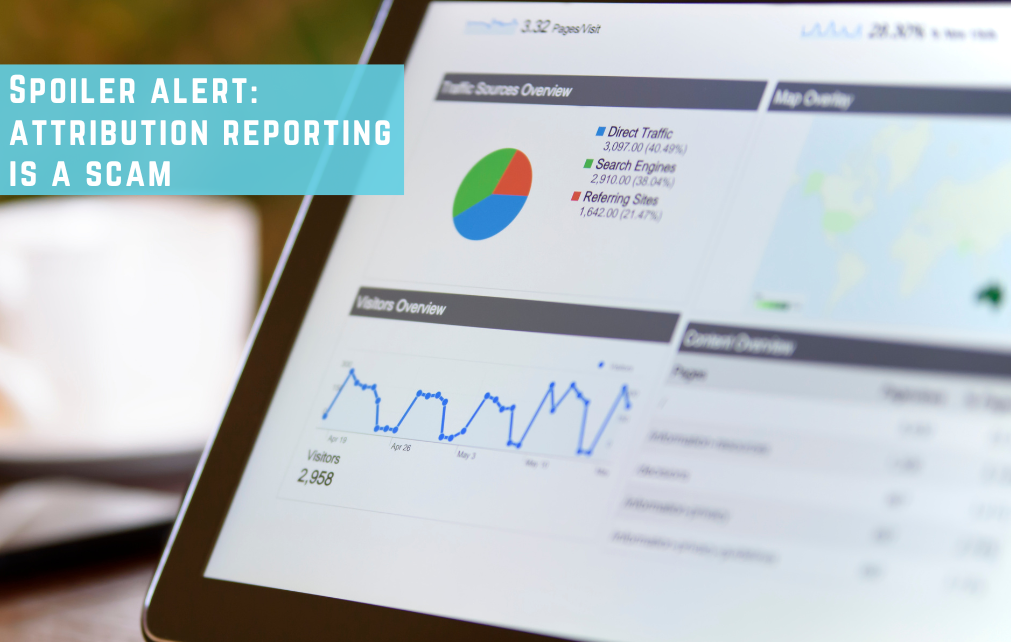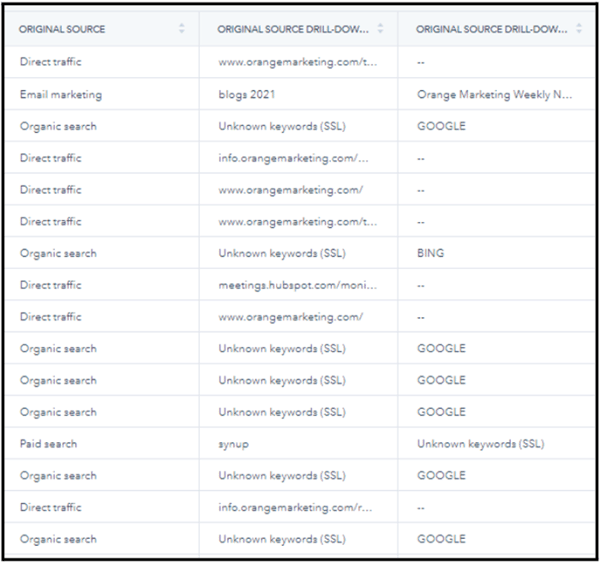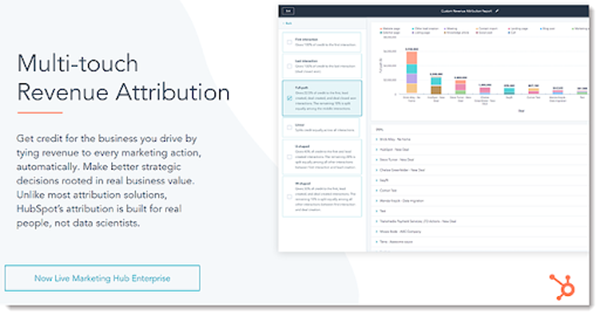
Marketers are about metrics. We’ve been drilled that if you can’t measure it, it doesn’t matter. And, FOREVER, marketing has had to constantly prove its worth to the business. Now that we’ve gone beyond the point where marketing is considered the team that does the tradeshows, t-shirts, and posters, it’s time to get real about attribution metrics.
Many marketers have been trained that attribution is the be-all and end-all of proving their marketing efforts' business contribution. They obsess over the different models and look at individual lead records with a magnifying glass to determine which ones contributed to revenue.
The problem is, most of the time, it just doesn’t matter.
Attribution Models
Attribution (lead source) is commonly over complicated. We understand it’s important to know where your leads are coming from—especially when you’re trying to work with finite resources.
There are a zillion different attribution models, from first touch, to last touch, to U, W, X, Y, Z, P, Q and R-shaped multi-touch models (just kidding, but U and W are real,) and all of them have merit in some situations. The problem is that most of them are irrelevant for early-stage founders or expert marketers moving downstream from an enterprise to a startup or even a small to mid-sized B2B.
So that brings us to this.
What Attribution Model Should I Use?
The point of attribution models is to make decisions.
There, we said it. Attribution models are not cocktail trivia. They are used to move your marketing budget around. Attribution models help you decide what to spend time and money on and what not to.
Most companies in the early stage and/or with limited budgets and teams are not generating ENOUGH leads for MODELS to work. Remember, attribution is truly a mathematical model. That means (high school stats class lesson alert) statistical significance counts.
A typical scenario in an early-stage company: marketing leads have created five deals this month, and all of them took a different attribution path:
Deal 1: Organic search > Demo request > Deal
Deal 2: Linkedin Ad > Download content > Sales Email > Demo Request > Deal
Deal 3: Linkedin Ad > Download content > Marketing Email > Marketing Email > Demo Request > Deal
Deal 4: Trade publication > Download content > Marketing Email > Marketing Email > Demo Request > Deal
Deal 5: Display Ad > Subscribe to Blog > Demo Request > Deal
You have LITERALLY no pattern. None. Each of these paths is exactly as good as the next.
You cannot decide what to start doing more of and what to stop doing. If you think you can, you’re wrong. If you looked at the above examples and said: "Oh, LinkedIn is what’s working," there’s no way you know that for sure. Even though it is 40% of the First Touch, Marketing email contributed to both leads. And, you don’t know from this example the content/creative of those marketing emails, which could have made a big difference.
Let’s contrast.
Here’s an example of when it matters:
In a previous life, Kelsey and Kirill (Orange Marketing media gurus) spent hundreds of thousands of dollars a month across multiple paid media options. The Board and Executive Team HAD to determine how to get to the lowest cost of acquisition possible, AS QUICKLY as possible. The objective of a multi-touch attribution model was to figure out which were contributing MORE than the others so that they could STOP doing things that were contributing as much as others to reduce the budget and shift to sources that were contributing more in a statistically significant manner. This took millions of data points. And thousands of closed/won deals attributed to marketing efforts.
Guess what? If you’re reading this on our humble little blog, then chances are you don’t have millions of data points.
Ok, I buy it. So answer the damn question.
If you’ve adhered to our recommendations, for most companies, including startups, to small SMBs, First Touch Attribution (Contact Original Source and Drill-down 1 and Drill Down 2 in HubSpot) will work beautifully for you out of the box.
Here’s how we use it:
Original Source
This is the “medium” or Channel, for lack of a better word, at the highest level.
Here are HubSpot’s out-of-the-box options:
- Organic search - Visitor searched for something that led them to your site. Keep in mind it could have been your brand name. Searching “Orange Marketing top HubSpot Agency” will be considered organic search.
- Paid search - Google AdWords, Bing, etc. are automatically classified here. See here for the complete list.
- Email marketing - HubSpot marketing emails (not sales emails, they’ll show as direct!)
- Organic social - Visited your site and converted from LinkedIn, Facebook, Twitter, etc.
- Referrals - This is referred from another site, NOT from a specific referral partner per se
- Other campaigns - Everything else - see below
- Direct traffic - Typed in your url, or clicked a link that took them straight to your website. And many times, this direct link could come from an email.
- Offline sources - Uploads, integrations like ZoomInfo, Sealess.ai, your HubS;pot email extension etc.
- Paid social - Paid ads on LinkedIn, Facebook, etc.
These will give you an idea of where your contacts are coming from. For a hardcore marketer, this may not be enough, but minimally you want to know you have a portfolio of incoming leads - there are contacts coming from multiple sources. In B2B, this is critical. Some sources could dry up at any time, like when:
- Google makes a search change
- Competitors start bidding against you on Google AdWords
- A big lead referrer takes down a link or blog post
If you don’t have a portfolio, you are in trouble.
Drill-Downs
The Original Source Drill-down 1 and 2 in HubSpot will give you a very good idea of where leads are actually coming from. Our most recent 20 or so leads show you that organic definitely pays off for us, but there is a mix.

Why First-Touch Attribution is Great for Startups and Resource Restricted Teams
Focusing on where your first touch happened allows you to focus more on top-of-funnel activities, which in turn will help your company
- Attract more prospects
- Increase brand awareness, and
- Generate more sales.
This is perfect for brands just getting off the ground because it’s insight into the channels that are best at initiating the first interactions prospects have with your business. You’re going to need to scale the ones that are working first.
BUT beware the red herrings.
Email Marketing: It’s going to show nearly ZERO new contacts. Guess why? Because you’re emailing to people you already have in your database. Of course they’re not new. Does that mean you should stop doing email marketing? Of course not! It’s helping move things down the funnel.
Organic Social: It nearly never converts unless you are spending all your focus there or you are B2C. So, should you stop doing social media? Of course not. It’s exposing people to your brand.
Display Advertising: Never converts, but keeps your brand in front of your prospects to help them “remember” you, even if they’ve never heard of you. Read our article about AdRoll for more on this.
But this doesn’t mean you should be using last touch either, because…you don’t have enough data points.
When it’s time to move to multi-touch
As your company matures, your attribution models will have to follow suit. While first-touch is great for demand generation, as you get to a scale where the SAME PATH is happening over and over, you’ll need to look to multi-touch models to help you determine what’s driving conversions and revenue in order to continue optimizing your strategy.
Back to our example, on steroids, for a scaling company (contrived to make a point).
|
Path per month |
Leads |
Opportunities |
Wins |
Cost per Lead |
|
Organic search > Demo request > Deal |
500 |
128 |
33 |
~$0* |
|
LinkedIn Ad > Download content > Sales Email > Demo Request > Deal |
500 |
389 |
22 |
$150 |
|
LinkedIn Ad > Download content > Marketing Email > Marketing Email > Demo Request > Deal |
800 |
550 |
89 |
$150 |
|
Trade publication > Download content > Marketing Email > Marketing Email > Demo Request > Deal |
500 |
77 |
12 |
$22 |
|
Display Ad > Subscribe to Blog > Demo Request > Deal |
50 |
6 |
0 |
$260 |
* A "$0" cost on SEO means that there is a known cost to having a good website with lots of content which brings leads in via organic search. However, it is an initial investment vs. ongoing variable cost.
Think you know the answer??
Get out your calculator. Costs are based on industry.
|
Path per month |
Wins |
Cost per Lead |
Cost Per Opp |
Cost |
Scalability |
|
Organic search > Demo request > Deal |
18 |
~$0* |
0 |
0 |
High |
|
LinkedIn Ad > Download content > Sales Email > Demo Request > Deal |
22 |
$150 |
$193 |
$3,409 |
Medium - LinkedIn Max Inventory |
|
LinkedIn Ad > Download content > Marketing Email > Marketing Email > Demo Request > Deal |
89 |
$150 |
$218 |
$1,348 |
Medium - LinkedIn Max Inventory Constraint |
|
Trade publication > Download content > Marketing Email > Marketing Email > Demo Request > Deal |
12 |
$22 |
$143 |
$917 |
High - Many Trade Pubs |
|
Display Ad > Subscribe to Blog > Demo Request > Deal |
0 |
$260 |
$2,167 |
$$$$$ |
Infinitely, but don't be ridiculous |
We’d recommend boosting your content efforts because you’re gonna need it to support your SEO, your trade pubs, and your marketing nurture. It might take longer, but it’s more scalable, and the CAC (Customer Acquisition Cost) is lower over time.
If You Must - Do Your Multi-Touch Revenue Attribution in HubSpot
If you know what you’re doing, you have the volume, and you’re a fan of the long-standing Google Ads attribution models and a HubSpot customer, you’re in luck. HubSpot’s multi-touch revenue attribution feature uses the same model but with the HubSpot contact and lifecycle stage events as the inflection points.

Want to debate this? Bring it. Let’s chat.
